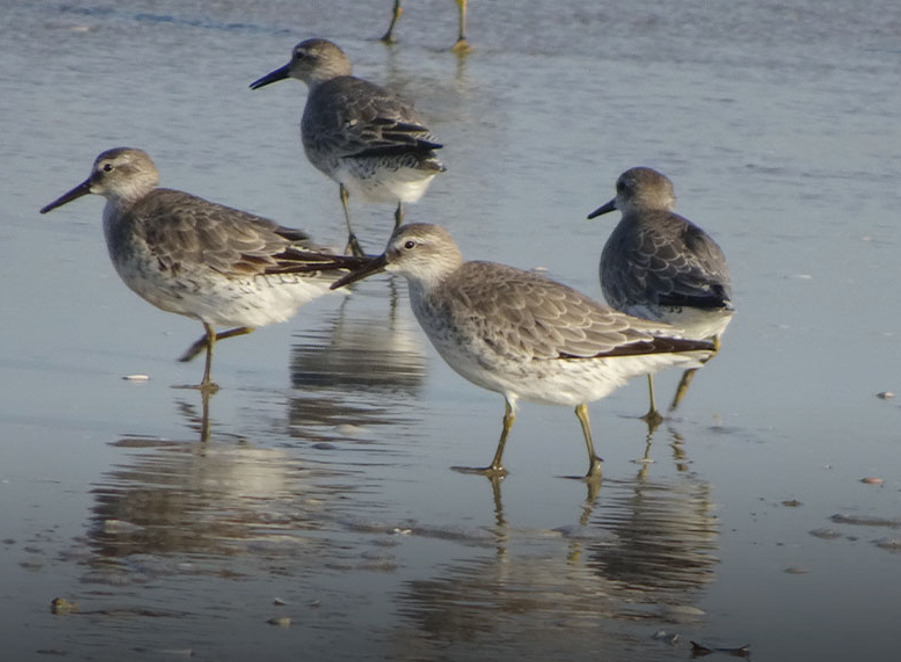As a young teenage birder, my father regaled me with anecdotes about how bird populations had changed since his youth. At the time, the thirty-plus years of conservation efforts that restored some species to their historic population levels did not cross my mind. Now the realities of shorebird conservation underpin my every day, working with researchers and citizen scientists throughout the Western Hemisphere.
Shorebird conservation is not for the faint of heart. From sleepless nights wandering grasslands in Uruguay to capture and band Buff-breasted Sandpipers (Calidris subruficollis), to trekking through rain-filled bison wallows in Kansas to count the various shorebird species using them as habitat, the effort required is tremendous. To learn about where shorebirds go, their needs when they arrive, the threats they face and how to address them to safeguard a population, researchers persevere.
Why? Because shorebirds are suffering some of the most marked declines of any group of birds in the world. In recent decades, threats to shorebird populations have become more diverse and widespread and pose growing conservation challenges. Tackling these challenges is more than just one organization can achieve.
Long-lasting conservation success requires strategic collaboration among many stakeholders at the local level and across each species’ full geographic range. Manomet’s Coalitions for Shorebird Conservation approach brings key stakeholders together to tackle the myriad threats at important sites for shorebirds. The Coalitions objective is to grow effectiveness of site-specific work by coordinating actions across sites connected by the same species, threats, or conservation strategies.





 Back to all
Back to all



